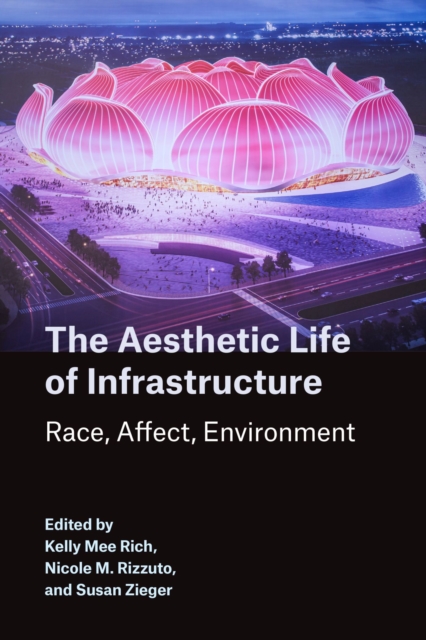
The Aesthetic Life of Infrastructure : Race, Affect, Environment Paperback / softback
Edited by Kelly Mee Rich, Nicole M. Rizzuto, Susan Zeiger
Paperback / softback
Description
A critical reading of the unstable structures that organize biological and social life This timely and radically interdisciplinary volume uncovers the aesthetics and politics of infrastructure.
From roads and bridges to harbors and canals, infrastructure is conventionally understood as the public works that allow for the circulation of capital.
Yet this naturalized concept of infrastructure, driven by capital's restless expansion, is haunted by imperial tendencies to occupy territory, extract resources, and organize life.
Infrastructure thus undergirds the living nexus of modernity in an ongoing project of racialization, affective embodiment, and environmental praxis.
Rather than merely making visible infrastructure's modes of power, however, The Aesthetic Life of Infrastructure brings literary methods to bear on the interpretive terrain, reading infrastructural space and temporalities to show that their aesthetic and sensorial experience cannot be understood apart from histories of production and political economies. Building on critical infrastructure studies in anthropology, geography, and media studies, this collection demonstrates the field's vitality to scholars working across the humanities, including in literary, visual, and cultural studies.
By querying the presumed invisibility of infrastructure's hidden life, the volume's contributors revitalize ongoing literary debates about reading surface and depth.
How, they ask, might infrastructure and aesthetics then function as epistemic tools for rethinking each other? And what urgency do they acquire in light of current crises that bear on death, whether biological, social, or planetary?
Information
-
Available to Order - This title is available to order, with delivery expected within 2 weeks
- Format:Paperback / softback
- Pages:224 pages, 11 b&w images
- Publisher:Northwestern University Press
- Publication Date:31/12/2022
- Category:
- ISBN:9780810145504
Information
-
Available to Order - This title is available to order, with delivery expected within 2 weeks
- Format:Paperback / softback
- Pages:224 pages, 11 b&w images
- Publisher:Northwestern University Press
- Publication Date:31/12/2022
- Category:
- ISBN:9780810145504






